PowaKaddy RX12 GPS Electric Trolley Review
PowaKaddy's flagship remote trolley has been given a huge update for 2025, but what was it like to use on the golf course?
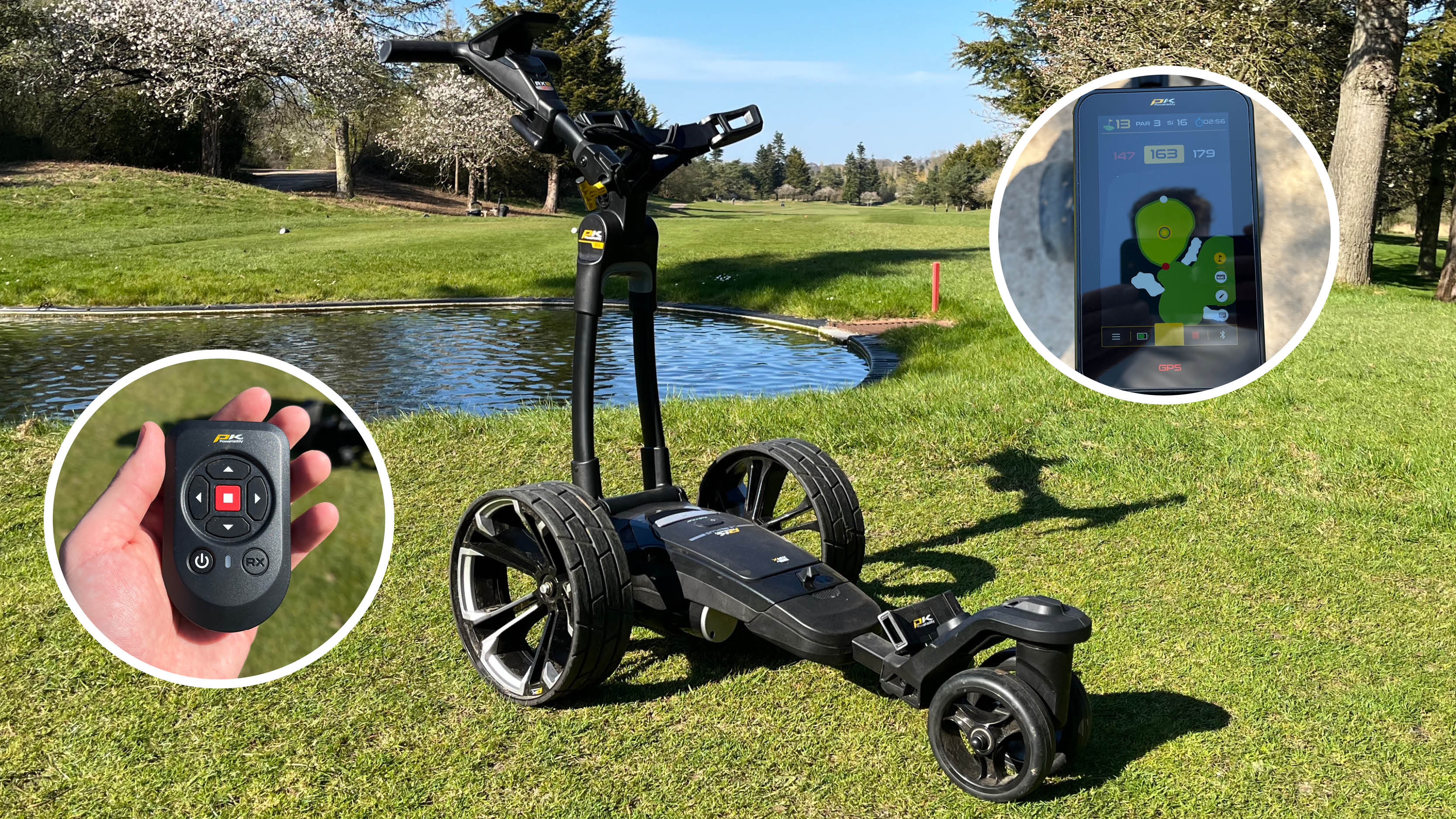
An excellent update from PowaKaddy's first remote offering in 2024, the RX1. The 5-inch portrait touchscreen is superb, allowing this remote trolley to stand out from the crowd. The remote functionality has improved on the RX1, but it does require some more attention compared to other remote trolleys when navigating slopes.
-
+
Superb portrait GPS touchscreen
-
+
Updated remote is much sleeker
-
+
Compact folding mechanism is easy to use
-
-
Requires more attention than some other when navigating slopes
Why you can trust Golf Monthly

PowaKaddy was a little late to the remote electric trolley market when it launched the RX1 and RX1 GPS in 2024. Competitors like Motocaddy and Stewart Golf had remote-controlled trolleys in production for several years before, but the RX1 put itself straight in line with them, such was its quality. PowaKaddy has given its RX series a complete revamp in 2025, and the RX12 GPS leads the line. Both the GPS screen and remote functionality have been given an overhaul, so how did it perform out on the course?
The first thing I noticed before even revving it up was the new screen in the handle. Much like the CT12 GPS I also recently tested, the trolley benefits from PowaKaddy's new 5-inch portrait touchscreen. As I said in my CT12 GPS review, I simply love the new orientation and size of the touchscreen. It just makes so much sense to have it in a portrait orientation as it allows you to see so much more of the full hole mapping on the GPS in so much more detail. That it's 5 inches is another benefit, and the 720p HD display offers crystal clear maps that are a joy to use. It's a powerful machine too, rocking a 1.1GHz processor that means the responsiveness to commands is akin to that of a premium smartphone.
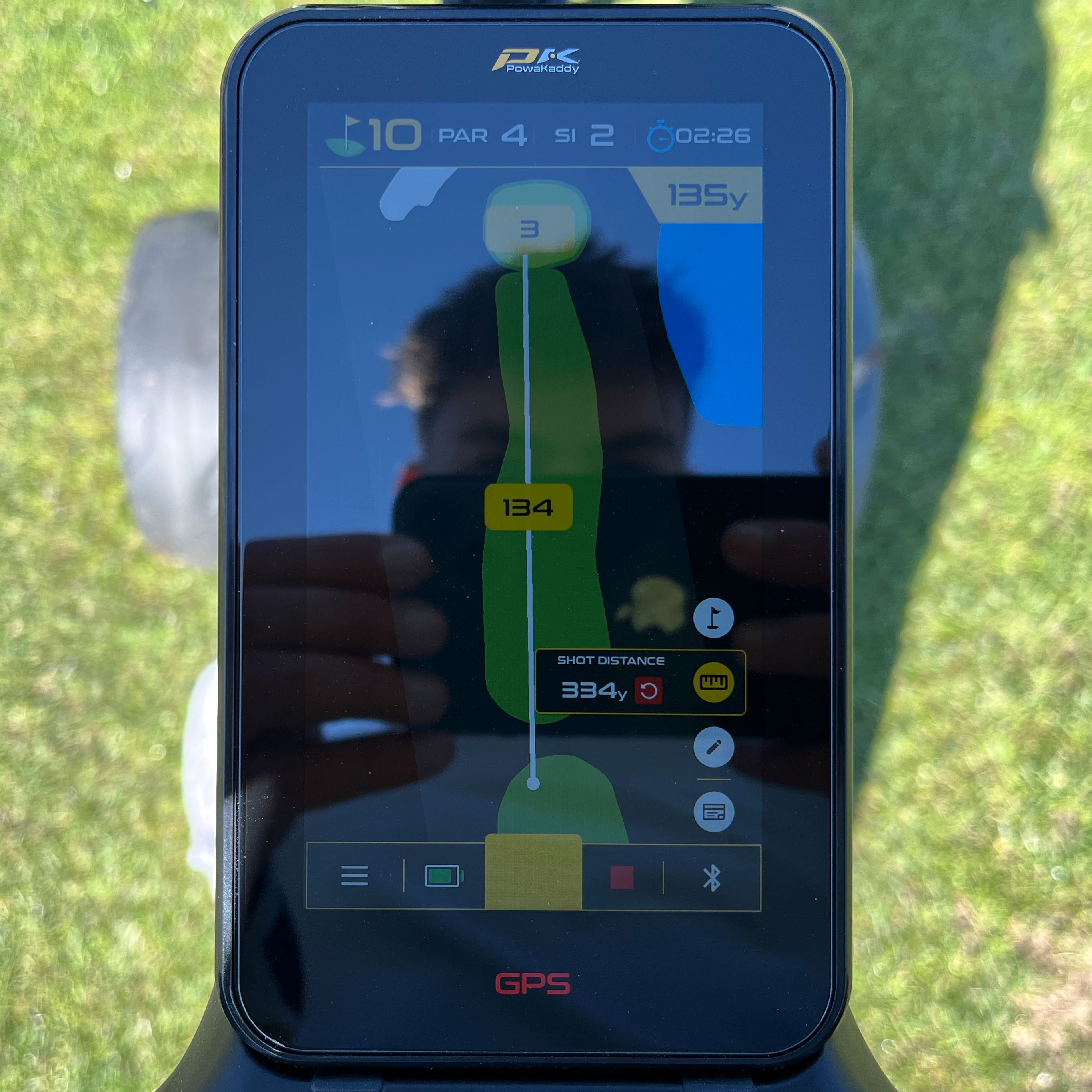
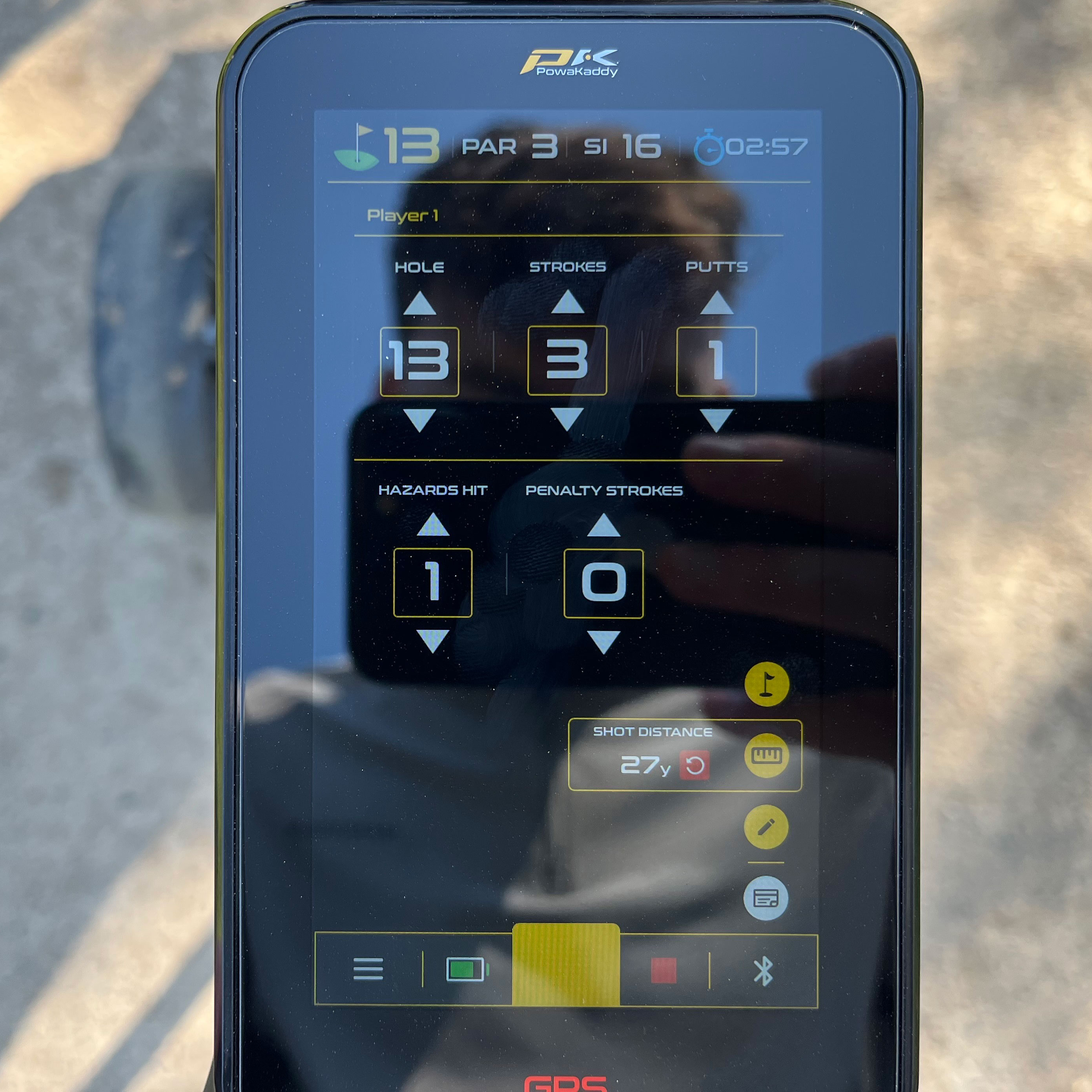
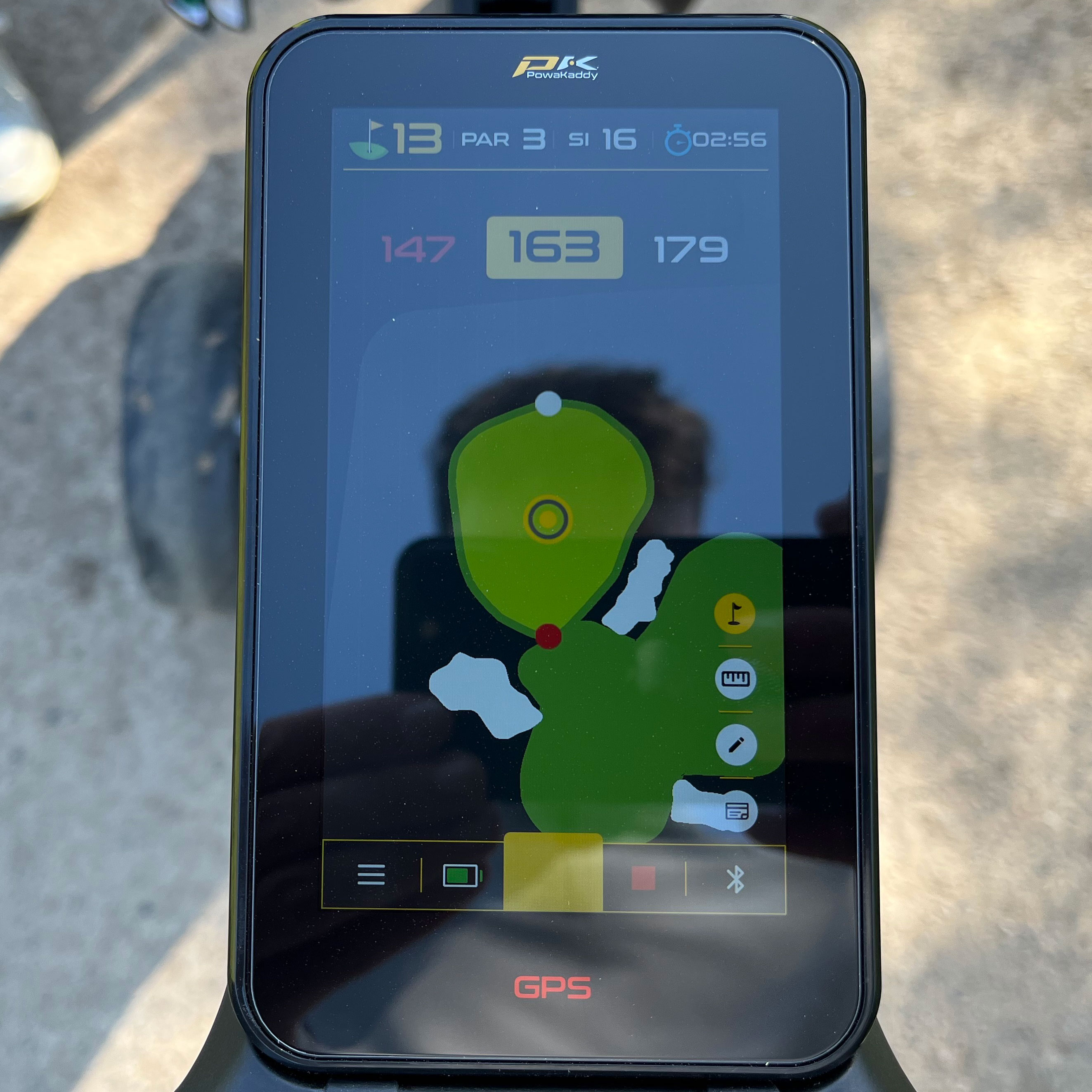
The GPS is ostensibly the same as previous PowaKaddy GPSs, just in portrait. It gives yardages to the front, middle and back of greens, yardages to hazards, the ability to drag and drop the pin, a scorecard, performance tracking (fairways hit, greens hit, putts per hole) and a shot measurer. The device also automatically follows you up the hole, giving you the exact focus area you require depending on if you're hitting a tee shot, approach shot or chip.
Full hole mapping is incredibly useful at courses you haven't played before, and you can simply touch any part of the hole layout to find out how far away it is - especially useful for finding yardages to the corners of doglegs or carries of fairway bunkers. The yardages were accurate to within a yard or two of the laser rangefinder I was using to corroborate yardages, which is about right for any GPS.
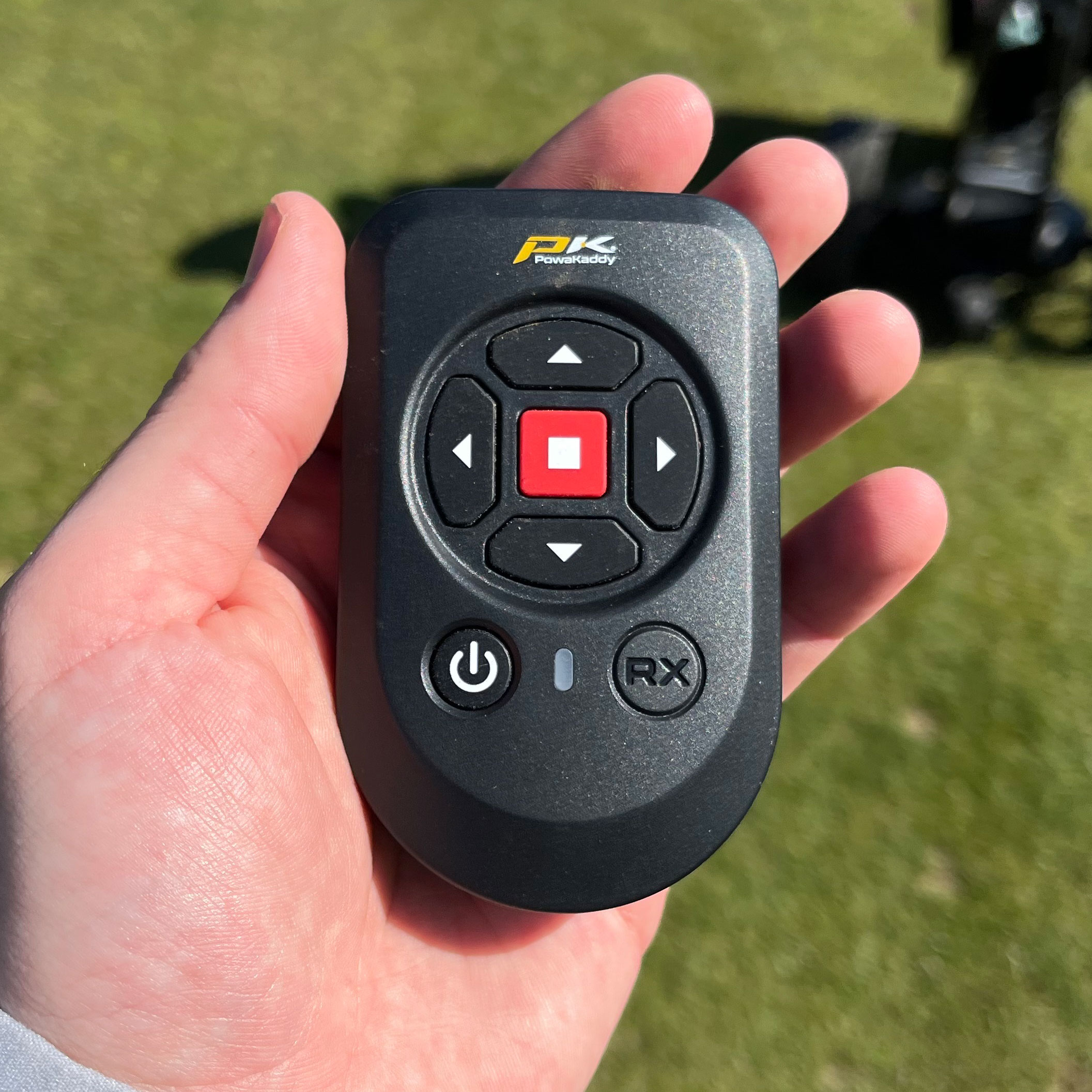
The new remote is more compact and has much more tactile buttons than on the previous version.
The RX12 has been given an all-new remote, which I was very glad to see. The old remote was quite bulky and inconvenient compared to the competition, and the new one is much slimmer with far more ergonomic buttons than the previous version. You can switch between remote and handheld use easily, too, thanks to the controls on the handle, ideal if you want to have that added element of control over bridges or on tight pathways.
The actual remote functionality of the RX12 is solid if unspectacular versus the likes of the Motocaddy M7 GPS and Stewart Golf Vertx Remote. The Vertx is still the class leader for me when it comes to how in control you feel of the trolley on the course, and this model also requires the least attention as you walk the fairways. I found myself having to add input to the RX12 to keep it going in a straight line quite often, especially if the terrain wasn't perfectly flat. The 360° wheels on the front always try to keep it going in a straight line, which often meant it veered off in the direction of a hill rather than pointing in the direction I wanted it to go.
Something like the Stewart Vertx, which has two fixed wheels on the front and a much wider base, needs far less input to keep it going on the right line and pace you want it to, and this makes a much more stress-free experience controlling the remote when compared to the RX12. The best remote trolleys, in my opinion, are the ones you can forget about while you're walking the course. Unfortunately, I felt I had to give the RX12 that little bit more attention than I wanted to out on the course, and thus, it isn't as good at being a remote trolley as others.
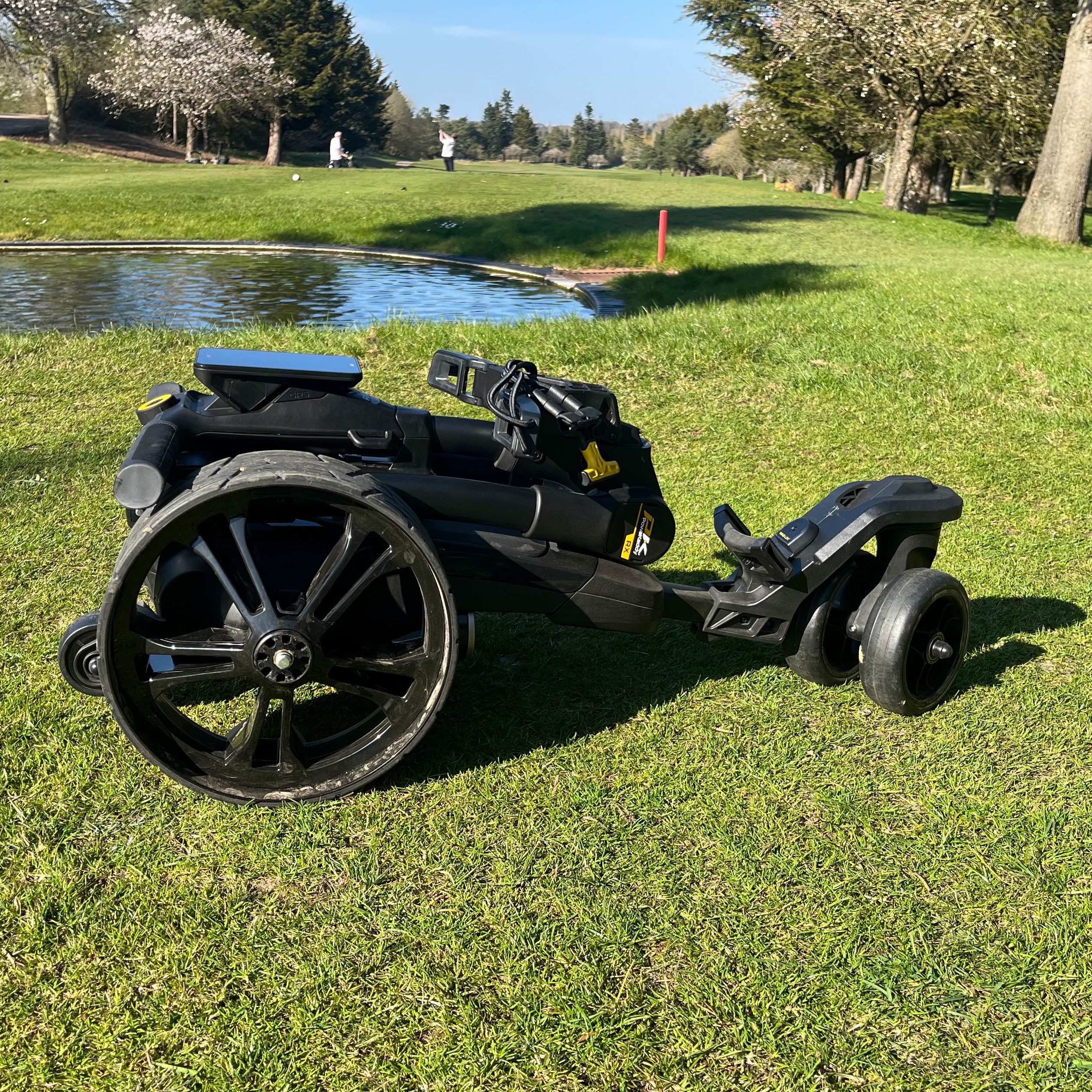
Though 20% more compact it still has a large folded footprint - but this is the case for most remote trolleys.
The RX12 folds 20% more compactly than the previous version in an impressive one-step system. As with any trolley, practice makes perfect, but this is a very simple trolley to fold away. I like how the rear anti-tip wheel is integrated into the folding method, too. Like every remote trolley, it's heavy, and the fact the front wheel doesn't fold under does mean it has quite a large footprint. The best compact electric trolleys will be better suited to those who are short on space in cars or at home. I love the way PowaKaddy designs its trolleys. The wheels on the RX12 look like the diamond-cut alloys you see on sports cars, while the stealthy matte black finish is complimented by some piano black glossy piano-black panels, which make it the best-looking remote trolley on the market, in my opinion.
I can sum up the RX12 in a few ways. The screen is now the best on any remote-controlled golf trolley on the market, bar none. The looks are the best, too. However, the actual remote functionality still isn't quite as good as its competitors. If you don't want the remote functionality but like the look of the new screen, the CT12 GPS could be the one for you. If you still want the combination of remote and GPS, the RX12 is an excellent trolley, but just don't expect the kind of responsive remote power you get from something developed by Stewart Golf.
Get the Golf Monthly Newsletter
Subscribe to the Golf Monthly newsletter to stay up to date with all the latest tour news, equipment news, reviews, head-to-heads and buyer’s guides from our team of experienced experts.

Dan has been with Golf Monthly team since 2021. He graduated with a Masters degree in International Journalism from the University of Sussex and looks after equipment reviews and buying guides, specializing in golf shoe, golf bag, golf cart and apparel reviews. Dan has now tested and reviewed over 30 pairs of golf shoes and is an expert in the field. A left-handed golfer, his handicap index is currently 6.5 and he plays at Fulford Heath Golf Club in the West Midlands.
Dan's current clubs:
Driver: Ping G440 Max 9°
Fairway: Ping G440 Max 15°, Ping G425 Max 20.5°
Irons: Cobra King Tec Utility, Ping i230 (5-PW)
Wedges: Ping Glide Forged Pro
Putter: TaylorMade Spider Tour X
Ball: Titleist Pro V1
You must confirm your public display name before commenting
Please logout and then login again, you will then be prompted to enter your display name.
-
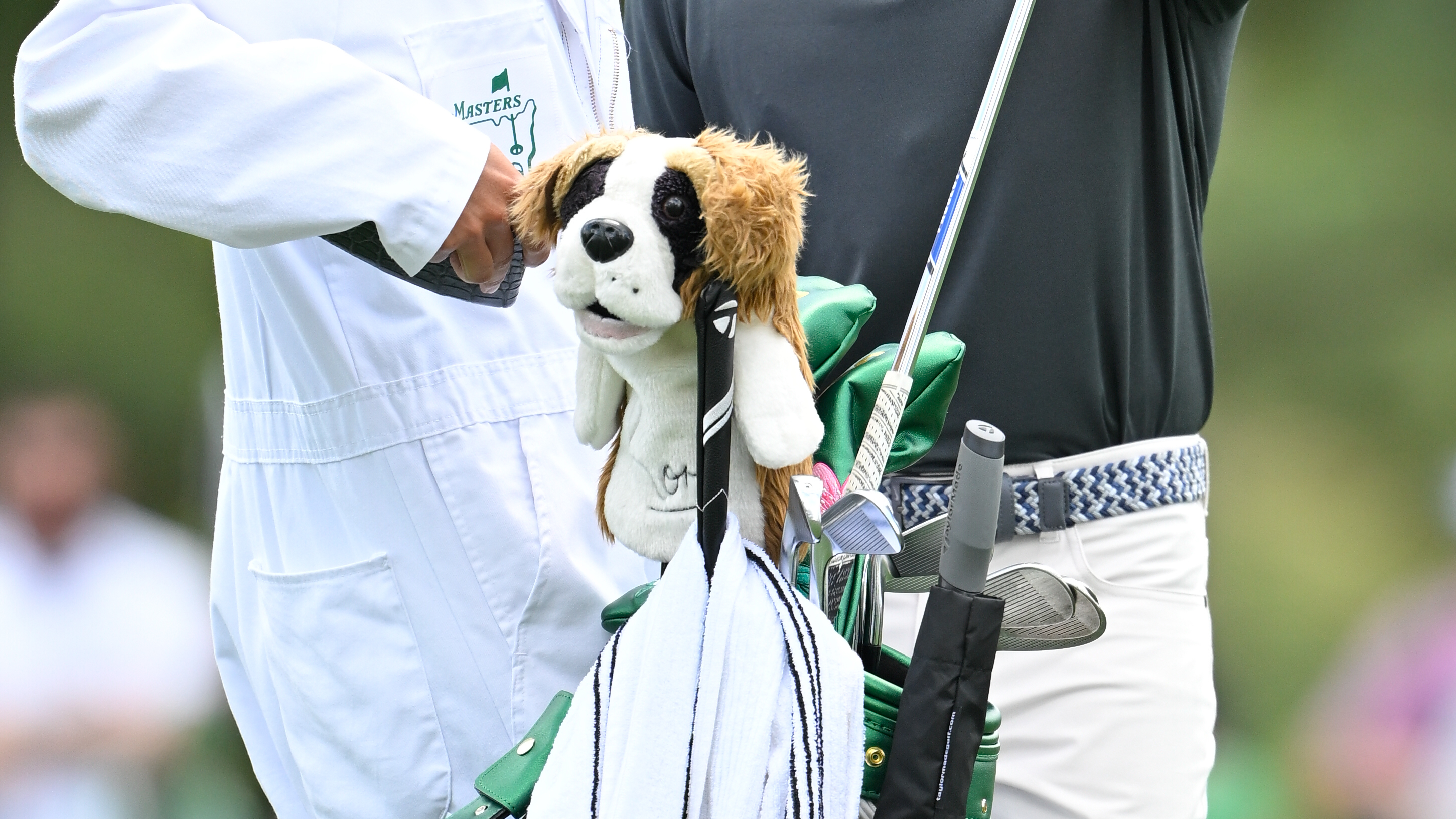 Why Does Rory McIlroy Have A Dog Headcover For His Driver?
Why Does Rory McIlroy Have A Dog Headcover For His Driver?The much-loved St. Bernard has travelled the world with McIlroy several times over
By Michael Weston Published
-
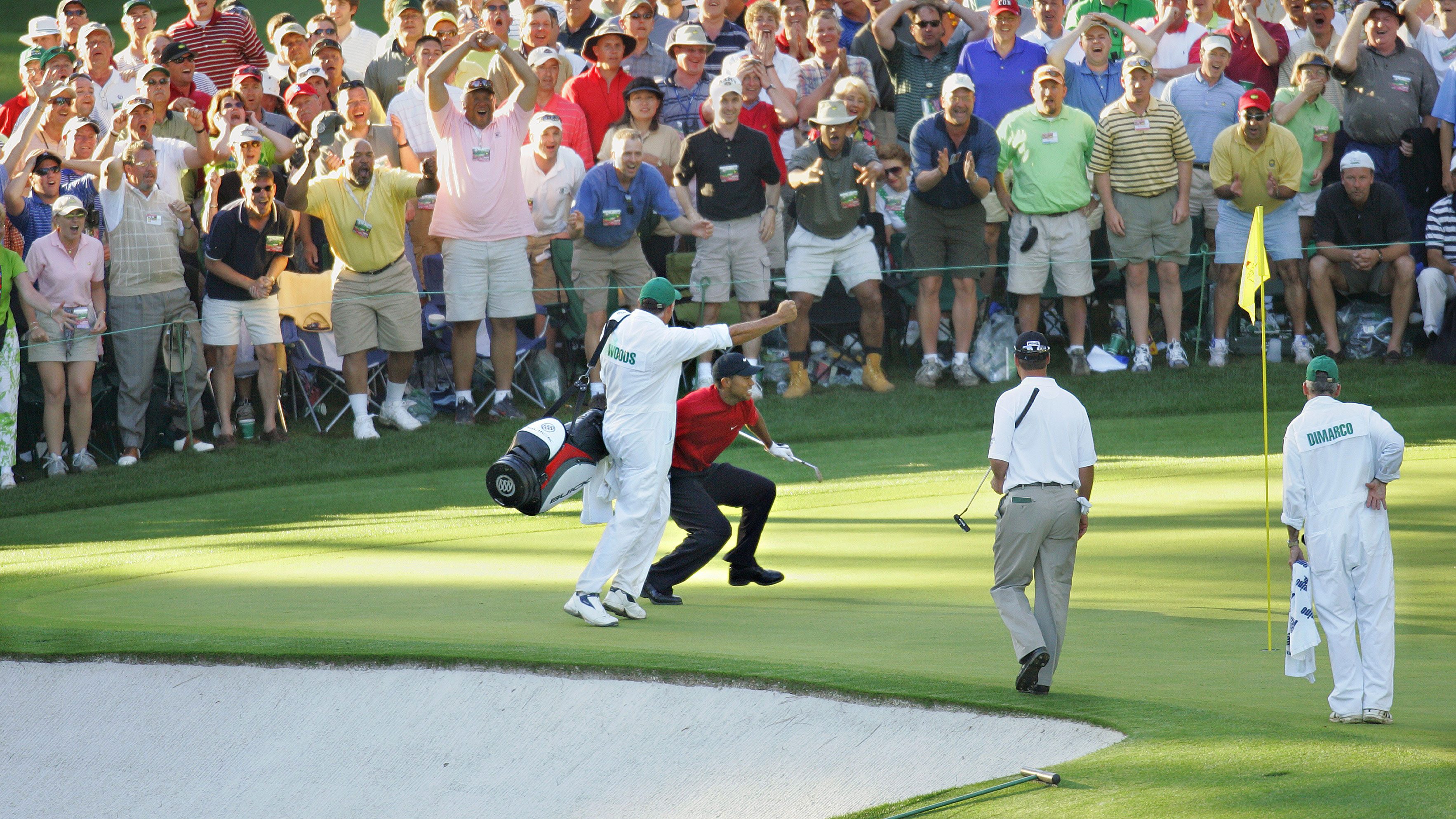 'Genuinely Shocking, I Just Spat Out My Coffee' - Masters Fans Surprised As Traditional Sunday Pin Switched Up For Final Round
'Genuinely Shocking, I Just Spat Out My Coffee' - Masters Fans Surprised As Traditional Sunday Pin Switched Up For Final RoundThe hole locations for the final round of the Masters have been released - and they've got a lot of people talking
By Michael Weston Published
-
 I’ve Been To The Masters On Practice And Tournament Days… Here Are The Pros And Cons Of Each
I’ve Been To The Masters On Practice And Tournament Days… Here Are The Pros And Cons Of EachEvery day at Masters week is special, but certain days can be marginally better than others
By Michael Weston Published